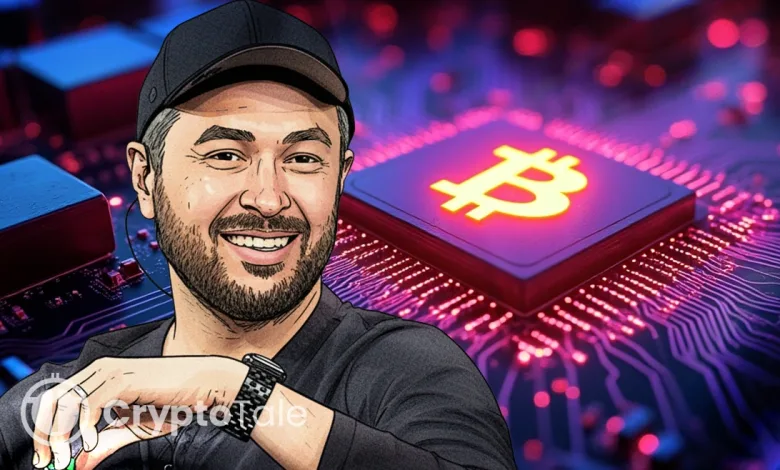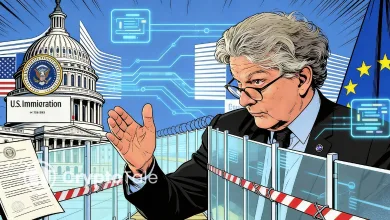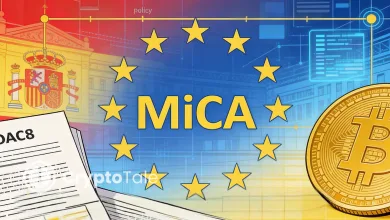Bitcoin Faces Governance Test as Quantum Threat Debate Escalates

- Anatoly Yakovenko warns that quantum computing could break Bitcoin’s cryptography by 2030.
- A shift to quantum-safe signatures would require a contentious and risky Bitcoin hard fork.
- Experts remain divided on the urgency of preparing Bitcoin for quantum security threats.
Bitcoin’s future security is under debate as experts warn that quantum computing could break its cryptography within the next decade. Solana co-founder Anatoly Yakovenko has urged action, stressing that a breakthrough may arrive sooner than expected. His comments at the All-In Summit 2025 highlight not just the technology risk but also Bitcoin’s governance challenge in adopting change.
Yakovenko said there is a “50/50” chance quantum computers could threaten Bitcoin’s Elliptic Curve Digital Signature Algorithm by 2030. He warned that once tech giants adopt quantum-safe systems, Bitcoin should also migrate to new cryptography. But making such a shift would require a contentious hard fork, demanding near-universal agreement among miners, nodes, and developers.
A Fork to Quantum Safety
Bitcoin is currently using the Elliptic Curve Digital Signature Algorithm to protect wallets and transactions. Running algorithms like Shor’s, Quantum computers could break this system, making it possible to forge transactions, thus posing a threat to the integrity and user funds of Bitcoin.
Yakovenko argued that advances in Artificial Intelligence show how fast research can leap into global deployment. He suggested quantum progress could follow a similar trajectory. For him, preparing now is critical because upgrading after a breach would be too late.
However, it would not be easy to move Bitcoin to quantum-resistant signatures. A hard fork would be necessary for a post-quantum upgrade, which breaks compatibility with the old chain. Hard forks are politically divisive in the Bitcoin community and demand overwhelming consensus. Earlier forks, including the ones that formed Bitcoin Cash, divided the community and caused disputes.
This means the challenge is not only technological but also governance-based. Achieving near-universal coordination across miners, developers, and exchanges would be necessary. Without that unity, Bitcoin could face fragmentation, a scenario the community wants to avoid.
Related: El Salvador Strengthens Bitcoin Reserves Against Quantum Threats
Experts Disagree on Timing
Despite Yakovenko’s warning, many Bitcoin advocates question the immediacy of the quantum threat. Adam Back, CEO of Blockstream, has argued that the risk is still far away. He said preparing Bitcoin for quantum safety is relatively simple and does not require panic.
Bitcoin Core contributor Peter Todd has also dismissed the urgency, noting that current quantum demonstrations are not capable of breaking real-world encryption. For him, describing these prototypes as threats is misleading. Another Bitcoin developer, Luke Dashjr, has pointed out that more pressing issues exist today. He highlighted spam and developer governance as more significant risks than hypothetical quantum breakthroughs.
Other experts, however, share Yakovenko’s concerns. David Carvalho, founder of Naoris Protocol, said in June that quantum computers might “rip” through Bitcoin’s cryptography in less than five years. Such forecasts fuel anxiety over whether the industry should move faster, even if the timeline remains uncertain.
Some believe in proactive defense against even distant risks, whereas others view unnecessary urgency as disruptive. The way the community perceives this balance will determine whether Bitcoin starts planning a hard fork in the near future or wait until breakthroughs are near.
The quantum debate underscores how Bitcoin’s biggest challenges often extend beyond technology. The blockchain can be technically enhanced, yet it remains hard to reach a consensus. Every major change requires balancing security, decentralization, and political agreement.




